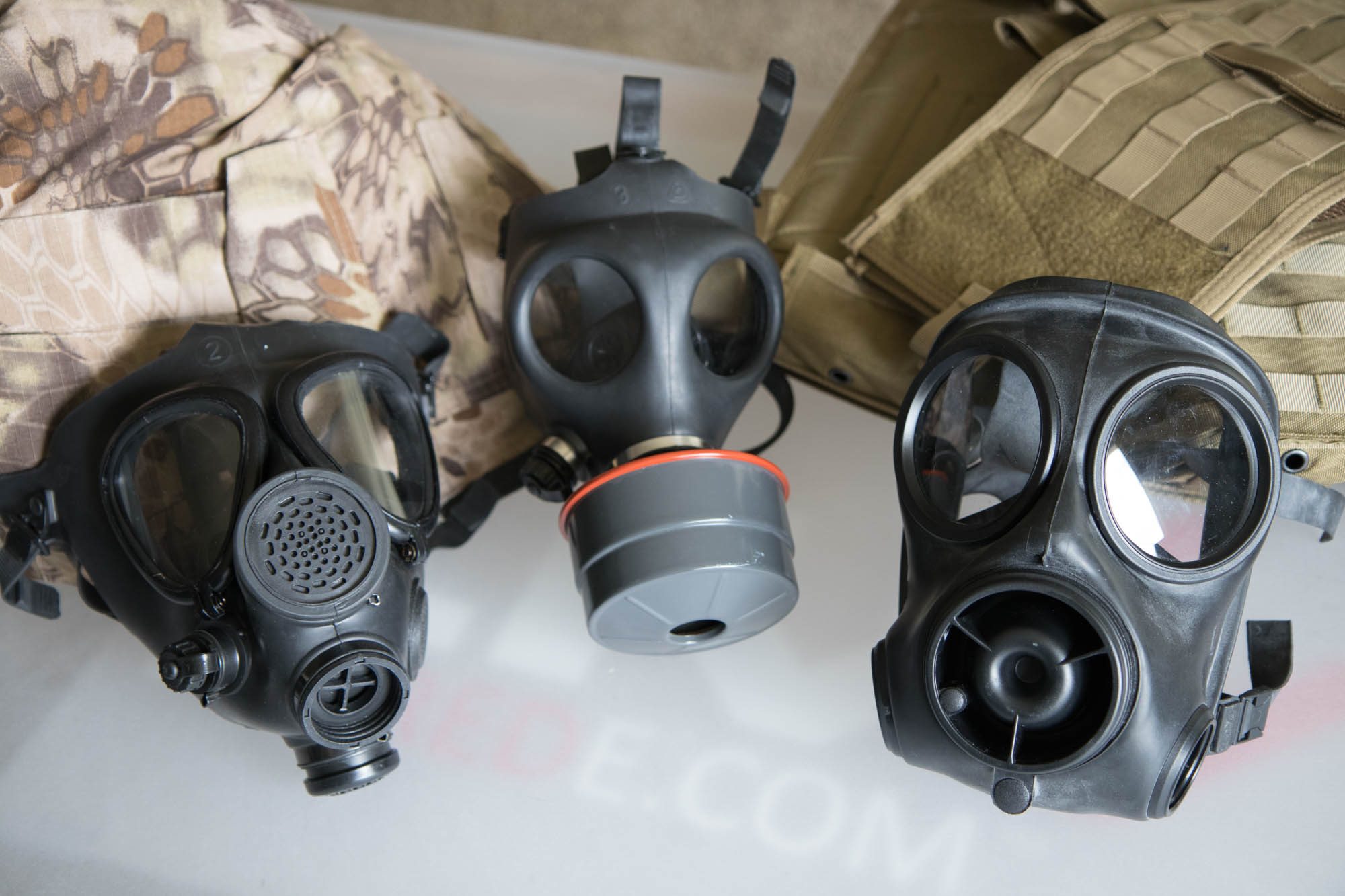Selecting a Gas Mask.
The gas mask goes by many names, NBC Respirator, CBRN Respirator, Air Purifying Respirator(APR), Field Protective Mask etc. The gas mask is a nice piece of kit because it covers multiple bad scenarios.
A good mask protects from inhaling poisons. Modern filters have a charcoal element that absorbs poisons and chemicals. An appropriate filter protects against nerve poisons, irritants and blistering agents.
Aside from poisons a gas mask offers protection against biological and nuclear hazards. Bio-weapons and nuclear particles can be quickly inhaled during a disaster. After inhalation it is impossible to remove the offending particles from the lungs. NBC filters have excellent particle filtration.
Meeting the Mission.
There are a lot of products in the gas mask category as well as adjacent products like escape hoods. A lot of these products will meet an immediate need. Selecting a mask with appropriate features is a big plus in an emergency.
In my view meeting the mission requires a reusable piece of equipment that works in a combat environment. This means escape/NBC hoods are out because they are generally not reusable and aren’t suited for combat.
Construction.
The mask has to be durable. This means a supple chemically resistant rubber or rubber analog for the body. My first recommendation is the mask should be a military style gas mask. Many civilian gas masks are versions of military units. Companies making these masks get a logistical advantage by sharing components. Selecting a military mask or a variant is a good place to start rather than a dedicated civilian style mask.
The mask should be full face, to protect your eyes from blistering agents and poisons. The mask must be in good working order. Don’t purchase a mask that is in poor condition.
40mm Filters.
A 40mm gas mask is really the place to start. 40mm Nuclear Biological Chemical filters are easy to find. Sealed military surplus filters are pretty common.
Some folks will look at a $10 Czech M10 gas mask thinking it is good deal. These types of masks take “cheek” filters. That means you have to remove the mask to change a filter. That’s a major hazard in a contaminated environment. Not to mention this type of mask is very old, which means there’s a much higher likelihood of component failure.
Filter Location.
It is hard to shoulder a rifle while wearing a gas mask. It is much more difficult to shoulder a rifle wearing a gas mask that puts the filter in the way of the rifle.
A gas mask should ideally use a single filter or powered air input that does not impede firing with your preferred hand.
Another point of concern is the industrial paint masks or full face respirators. These masks typically take proprietary filters that snap or thread to both sides of the respirator. Not only does this put the filter in the way of shooting with either hand. But it also means harder to find proprietary filters.
Visibility.
Seeing is critical in any emergency, so a gas mask’s eye pieces are pretty important components. I prefer masks with large double eye pieces. A lot of masks can be a bit more compact and fit a little closer with double eye pieces. Avoid masks with small eye ports.
Single eye pieces often have better visibility than a double piece type. Single eye piece masks can be quite a bit more bulky than other masks. More industrial style masks have a single view port. If you choose to select a a single view port mask make sure you can shoulder a rifle with it. One reason you might choose a single port mask is so you can adapt prescription eye wear to the mask.

Drinking Tubes & Voice Emitters.
Drinking tubes and voice emitters are nice pluses when selecting a mask. Most military masks have these upgrades. You may find a civilian counterpart mask that has good eye pieces and filter placement but doesn’t have a drinking tube. I favor visibility and rifle compatibility.
Final Thoughts…
Gas masks have limitations. While gas masks offer protection from blistering agents and poisons. These agents can still be hazardous if they can be absorbed by the skin. Keeping these out of your eyes and out of your lungs is a big plus. Having a plan to deal with decontamination and treatment is another part of any legitimate plan to deal with these hazards.
A gas mask is a great part of a preparedness toolbox. Selecting an appropriate example will help you live ready.

